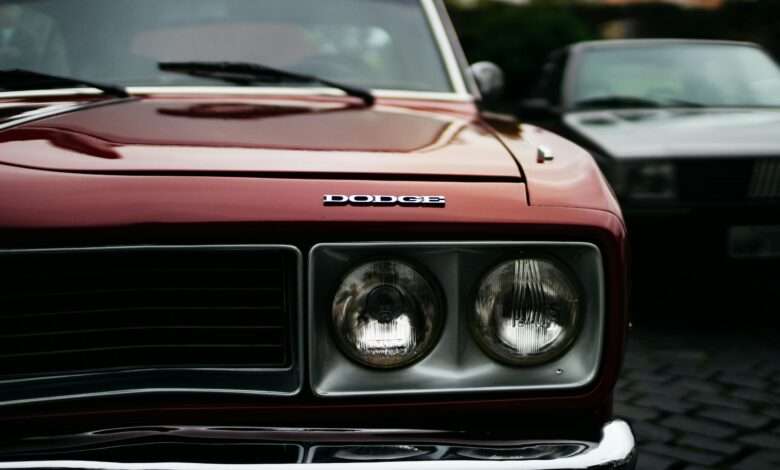History of Iconic Muscle Cars : A Deep Dive into Automotive Legends

Muscle cars are more than just powerful vehicles; they are symbols of American automotive history, embodying an era of speed, style, and rebellious spirit. The “History of Iconic Muscle Cars” reveals a captivating journey through the evolution of these legendary machines, from their origins in the 1960s to their enduring legacy today. This article explores the rise, peak, and revival of muscle cars, highlighting their impact on American culture and automotive innovation.
History of Iconic Muscle Cars : Pioneering the Performance Era
Early Innovationns ad Influences
The “History of Iconic Muscle Cars” begins in the early 1960s when American automakers started to experiment with high-performance engines in mid-sized cars. This era marked the birth of a new genre of automobiles characterized by their large V8 engines, aggressive styling, and rear-wheel drive. The term “muscle car” soon became synonymous with these powerful, affordable vehicles designed to deliver thrilling performance on both the road and the drag strip.
The Pontiac GTO: The Trailblazer
The Pontiac GTO, introduced in 1964, is often hailed as the first true muscle car. Dubbed “The Goat,” the GTO set new standards with its 389 cubic inch V8 engine producing 325 horsepower. This groundbreaking vehicle was designed to appeal to younger buyers seeking both speed and style, combining affordability with remarkable performance. The Pontiac GTO’s success established a template for future muscle cars and ignited a competitive spirit among American manufacturers.
The Golden Age of Muscle Cars: The Late 1960s to Early 1970s
A Decade of Dominance
The “History of Iconic Muscle Cars” reaches its zenith during the late 1960s and early 1970s, often referred to as the golden age of muscle cars. This period was marked by intense competition among automakers to produce the most powerful and stylish vehicles. The result was an array of iconic models that have since become legends in the automotive world.
The Ford Mustang: The Pioneer Pony Car
The Ford Mustang, introduced in 1964, played a crucial role in shaping the muscle car era. Its blend of sleek design, affordability, and performance, including a powerful 289 cubic inch V8 engine, helped establish the “pony car” segment. The Mustang’s success led to the creation of rival models such as the Chevrolet Camaro and Dodge Challenger, solidifying its place in the “History of Iconic Muscle Cars.”
The Chevrolet Camaro: A Fierce Competitor
In response to the Mustang’s success, Chevrolet launched the Camaro in 1966. Marketed as a “pony car,” the Camaro featured a range of powerful engines, including a 396 cubic inch V8 capable of producing up to 375 horsepower. The Camaro quickly became known for its aggressive styling and performance, creating a fierce rivalry with the Mustang. This competition drove both brands to innovate and push the boundaries of muscle car design.
The Dodge Charger and Plymouth History of Iconic Muscle Cars ,Road Runner: The Mopar Icons
Chrysler’s contribution to the muscle car era included the Dodge Charger and Plymouth Road Runner. The Charger, introduced in 1966, was celebrated for its sleek design and powerful Hemi engine options, making it a favorite among enthusiasts. The Road Runner, introduced in 1968, emphasized affordability and performance with its 383 cubic inch V8 engine and minimalist design. Both vehicles became iconic symbols of the era, showcasing the diverse appeal of muscle cars.
The Decline of the Muscle Car Era: Challenges and Changes
Factors Leading to the End : History of Iconic Muscle Cars
The early 1970s brought about significant challenges that led to the decline of the muscle car era. The 1973 oil crisis resulted in soaring fuel prices, making large, gas-guzzling engines less desirable. Additionally, new government regulations on emissions and safety required manufacturers to reduce horsepower and make other modifications. Rising insurance premiums for high-performance vehicles further diminished their appeal. These factors combined to mark the end of the golden age of muscle cars.
The Shift to Fuel Efficiency
As the focus shifted to fuel efficiency and environmental concerns, the production of high-performance muscle cars decreased. Although some models continued to be produced, they no longer matched the raw power and performance of their 1960s predecessors. This transition marked a significant shift in the automotive landscape.
The Revival of Muscle Cars: A Modern Renaissance
The Return of Performance
Despite the decline, the 1980s and 1990s saw a renewed interest in performance cars, leading to a revival of muscle cars with modern technology and design. This resurgence blended classic muscle car aesthetics with contemporary engineering, bringing these iconic vehicles back into the spotlight.
The Ford Mustang: A Modern Classic
The Ford Mustang, which remained in production through the 1980s and 1990s, underwent various redesigns to adapt to changing market demands. The fifth-generation Mustang, launched in 2005, marked a return to its muscle car roots with a retro-inspired design and powerful V8 engine options. This revival helped the Mustang reclaim its status as a symbol of American performance.
The Chevrolet Camaro and Dodge Challenger: Reborn Icons
Following the Mustang’s success, Chevrolet and Dodge reintroduced their iconic muscle cars. The Chevrolet Camaro made a comeback in 2010 after an eight-year hiatus, featuring a retro design and powerful engine options, including the SS model’s 6.2-liter V8. The Dodge Challenger was reintroduced in 2008, embracing its classic design while offering modern performance features, such as the supercharged Hellcat engine producing over 700 horsepower. These revivals highlighted the enduring appeal of muscle cars in the modern era.
History of Iconic Muscle Cars : Timeless Appeal
Enduring Influence and Cultural Impact
The “History of Iconic Muscle Cars” is not just a story of automotive innovation but also of cultural significance. Today, muscle cars continue to captivate enthusiasts worldwide, celebrated for their raw power, distinctive styling, and impact on American culture. Modern muscle cars like the Ford Mustang, Chevrolet Camaro, and Dodge Challenger offer advanced technology and improved performance while retaining the spirit of their legendary predecessors.
History of Iconic Muscle Cars in Popular Culture
Muscle cars have left a lasting mark on popular culture, appearing in movies, television shows, music, and video games. Iconic moments, such as Steve McQueen’s high-speed chase in “Bullitt” featuring a 1968 Mustang GT and the “Fast and Furious” franchise, have cemented muscle cars as symbols of excitement and performance.
Conclusion
The History of Iconic Muscle Cars is a testament to American automotive ingenuity and passion. From the Pontiac GTO that sparked the muscle car craze to the modern revivals of the Ford Mustang, Chevrolet Camaro, and Dodge Challenger, these vehicles have become legends in their own right. While the golden age of muscle cars may have ended in the 1970s, their legacy endures, continuing to inspire car enthusiasts and shape the future of automotive design. As long as there is a desire for speed, power, and freedom, muscle cars will remain a cherished part of American culture.
This review of the “History of Iconic Muscle Cars” is prepared by V Aiotechnical.com, reflecting the dedication of our editorial team to delivering insightful and engaging content.





